Dr Ruth Calderon is the former Deputy Speaker of the Knesset and MK for the Yesh Atid party. An educator and Talmud scholar, she co-founded Elul, a pioneering Beit Midrash, and founded and directed the Home for Hebrew Culture (Alma). She is a research fellow at the Shalom Hartman Institute and one of Israel’s leading voices for the revival of a pluralistic Israeli-Jewish identity.
Learning from Remembrance Sunday
I remember visiting the UK around the time of Remembrance Sunday and being touched by the sight of red poppies everywhere. It struck me that this simple expression of a nation’s history was bringing meaning into the public sphere and into peoples’ lives. I felt it represented a beautiful example of how a culture can express itself without coercion. I still keep the poppy I bought during that trip.
Israel has now marked its 70th birthday and we are in great need of a rich, meaningful Jewish space that does not suffocate people or force them to do things they don’t believe in. Thankfully, there are encouraging signs that a more nuanced and sensitive model of religion and culture is emerging in Israeli politics and society.
Beyond the religious-secular divide
When I was growing up in the 1960s and 1970s, it was as if there were only two options in Israeli ‘Jewishness’ – to be either religious (which meant keeping Jewish law in an Orthodox way) or to be secular (although Israeli-secularism spoke Hebrew, possessed knowledge of the Bible, Hebrew literature and Jewish history, and lived according to the Jewish calendar).
Today, however, there is a growing cultural movement, numbering approximately 60 organisations and many Mechinot (pre-military training / leadership groups), comprised of people who, while they do not feel they belong to Orthodoxy, want to be learned in their culture and to reclaim classic Jewish texts. The ‘Great Books’ system of study encourages building on the past in order to try and help shape the present. Many of Israel’s great writers and artists, including author David Grossman and musician Kobi Oz, now regularly study classical Jewish texts to deepen their language and to connect to the past.
In some ways this movement is a reaction to the early Zionists who tried to create a ‘new Jew’ who, while often having a strong foundation of Bible and Zionism, lacked anything in between. They jumped ‘from the Tanach (Bible) [directly] to the Palmach’ expunging everything inbetween – the Mishnah, Talmud, Kabbalah, Hasidism etc. Consequently, they skipped over components of Judaism which formed an important part of the ongoing conversation within Jewish civilisation and which Israelis today increasingly seek a connection with. Some of my generation are now reclaiming those parts of our tradition which have been relatively ignored.
Another component driving the change has been Israelis’ reaction to the Yom Kippur War. While the victory in 1967 encouraged self-confidence and pride, the Yom Kippur War brought many Israelis to a crisis in their Jewish identity and cast doubt on the resilience of contemporary Israeli culture. While the Israeli national culture of my youth was very suitable for a young country Israel is now 70 and the reclamation of hitherto neglected parts of our history signals greater maturity in forming our identity as Israeli Jews.
In time, this movement is likely to influence Israeli society from top-down and bottom-up. It’s still unclear exactly what forms this will take – it could be changing the law that currently allows ultra-Orthodox people not to share in the collective burden, or it could be changes in the law to make state sponsorship available to any Jew who wants to study, in order to serve society in the future.
Investing the public sphere with Jewish-cultural meaning
Part of the inspiration for my suggested pluralist model of religion and state comes from my family background. While I didn’t learn about the Jewish prayer book or the Rabbinic universe in school – topics I now feel are basic and important – neither my father nor mother were totally secular. Instead, I grew up in a traditional, easy-going Sephardi home (my father’s Judaism was of a particularly Bulgarian / Balkan type). Our home wasn’t observant, but there was a lot of love, respect and fidelity to the past, without much fear or guilt. We would often light candles and make Kiddush before going out on a Friday night or watching television. In this sense, we actually behaved in a way shared by many Israeli families. It is this moderation, respect and lack of coercion that many currently experience in their familial-private sphere that I would like to see adopted in the national Israeli public sphere. Atop a shared foundation in Jewish texts and culture, each person and community should live alongside one another and enjoy one another’s differences, feeling protected without feeling trapped; and, like those poppy-wearers on Remembrance Sunday, be able to enjoy the small reminders and symbols of our shared national culture.
Of course, in many respects, the Israeli public space is already thickly Jewish. Streets are named after Jewish biblical commentators and philosophers in Jerusalem’s Rechavia neighbourhood; on Purim, bus drivers and waiters will wear fancy dress masks; in stores, Kosher for Pesach cookies replace the Hamentaschen when spring arrives. And everything is in Hebrew. In fact, I believe the biggest Zionist achievement – more than Israel being a ‘start-up nation’ – is the fact we built a dense, rich, Jewish public space.
But can we deepen and enrich the Jewish content in the public space? Like Russian students learning Chekhov and Brits learning Shakespeare, we should learn our Jewish cultural treasures – not just Leah Goldberg and Dahlia Ravikovitch but Maimonides and Spinoza as well. And we should read them not as ‘museum pieces’ but in order to appropriate them for today. Focusing solely on Biblical and Zionist history means only knowing part of the ‘family’. To really be a cultural person in Israel – to authentically form part of the ongoing conversation about what it means to be Jewish today – one needs to know the ‘canon’ which begins with the Bible, continues with rabbinic literature and medieval Jewish philosophy, and extends to modern Israeli literature and poetry. These comprise one long chain, forming parts of the spiritual biography of our nation. One doesn’t need to love these texts, but one needs to know them.
In late March I joined a demonstration opposing government plans to expel asylum seekers. Many of us held signs that were inspired by Jewish texts or by the upcoming Passover holiday – the commandment for Jews to remember that we were once slaves in Egypt and we should care for the stranger in our midst. Yet our opponents had their own signs that also drew on tradition – that we should prioritise the poor of our own community before others. Regardless of the arguments, this to me reflected the essence of a public space infused with our culture and tradition.
Two communities stand outside this model. First, those Israelis who live outside the country (in a different public space) and who play no part in communal or synagogue life. These people will need to design their own Jewish-cultural rituals in order to create Jewish meaning for themselves. Second, Israel’s Arab minority. While Israel was created as a nation state, there needs to be space for national minorities to live in freedom to celebrate their own culture alongside the culture of the majority. I hope that in the future all of Israel’s citizens will find some shared events we can celebrate together.
Creating a new pluralist model of religion and state
While some perceive Judaism to be solely (or primarily) a religion, Zionism saw it as both a nationality and a culture, and believed the Jewish-ness of the public space should reflect this. In other words, priority was given to national-cultural components (language, history, tradition etc.), rather than Halachic-legal ones. The legal restrictions that currently affect people’s ability to marry in the way they’d like, or to have access to public transport on Shabbat need to be altered. The ‘Church’ part of the ‘Church and State’ relationship – reflected in the legal powers of the official Rabbinate – is currently very damaging to a plural Jewish identity and should be dissolved. Yet, partially because the Jewish public space is so dear to me, and because I see great value in it, I do not support the complete separation of Church and State. Public schools should teach Jewish history and texts, television and radio stations should play Jewish content, and the official languages should continue to be Hebrew and Arabic.
Every Jewish citizen who wants Jewish services should be able to choose from the different religious streams and organisations – a free market in which the best ideas will ultimately win. We should look at the pluralistic model enjoyed in Sweden, where an individual becomes a member of the Jewish community by paying a fee (based on a percentage of income) and can then choose what type of Judaism they want access to. They are able to decide whether to send their child to an Orthodox school or a pluralistic school, to celebrate a barmitzvah or have a wedding performed by an Orthodox, Reform, or Secular Rabbi. They can choose to receive all the Jewish services in the life cycle according to what they find most meaningful. They can even mix and match.
Many secular people in Israel still see Orthodoxy as the ‘authentic’ expression of Judaism, primarily because they believe in what I term Catholic Judaism, rather than the Protestant Judaism that is experienced in America, where there are many ways to practice one’s Jewishness outside of the Orthodox world. We need a Jewish space able to facilitate different expressions of Judaism, allowing individuals to act out of freedom, less judgemental and more encouraging of peoples efforts to live a meaningful life – not an easy thing in today’s chaotic world.

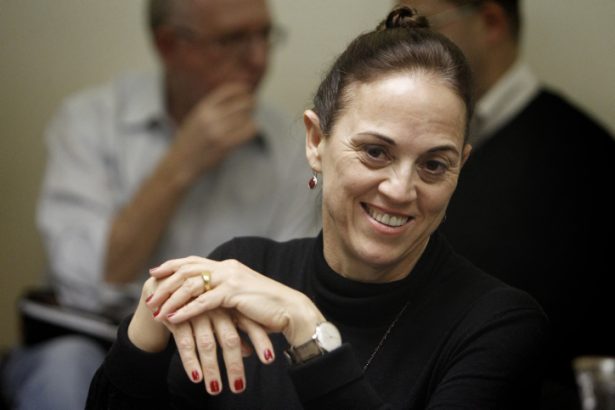

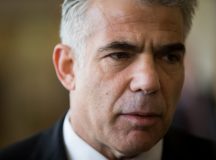
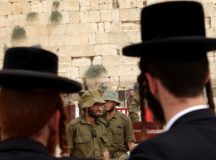
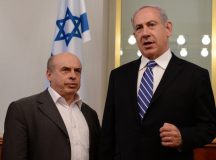
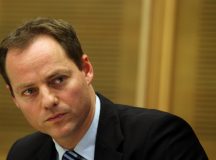































I remember Ruth Calderon’s maiden speech as MK and the delight even with only Ulpan Hebrew from 67-68 Shnat Sherut to hear and understand most of it – even in deepest Manchester. I noticed in 67-68 that sometime wounded IDF soldiers wear a small anemone badge. Amongst other reasons to stop the coarse from calling them “jobniks” if in an office. Meanwhile I have worn a poppy on Remembrance Sunday all my adult life and was impressed not only by how French and Italian mayors wear their tricolour sash on duty but at how at the opening session of the Knesset all the MK’s wear a small knotted blue and white ribbon in their buttonhole. The Haredi black “uniform” overdoes this making a Holier than thou point. It is not modest and not Jewish. Black was expensive fr lack of black dye from the 1500’s t 1700’s so the cloth had to be double dyed and it is a brag. Worse black for religiosity was a (Counter)Reformation Spanish fashion. Josephus tells us that the Jews of Temple II times wore white on Shabbat and Haggim.